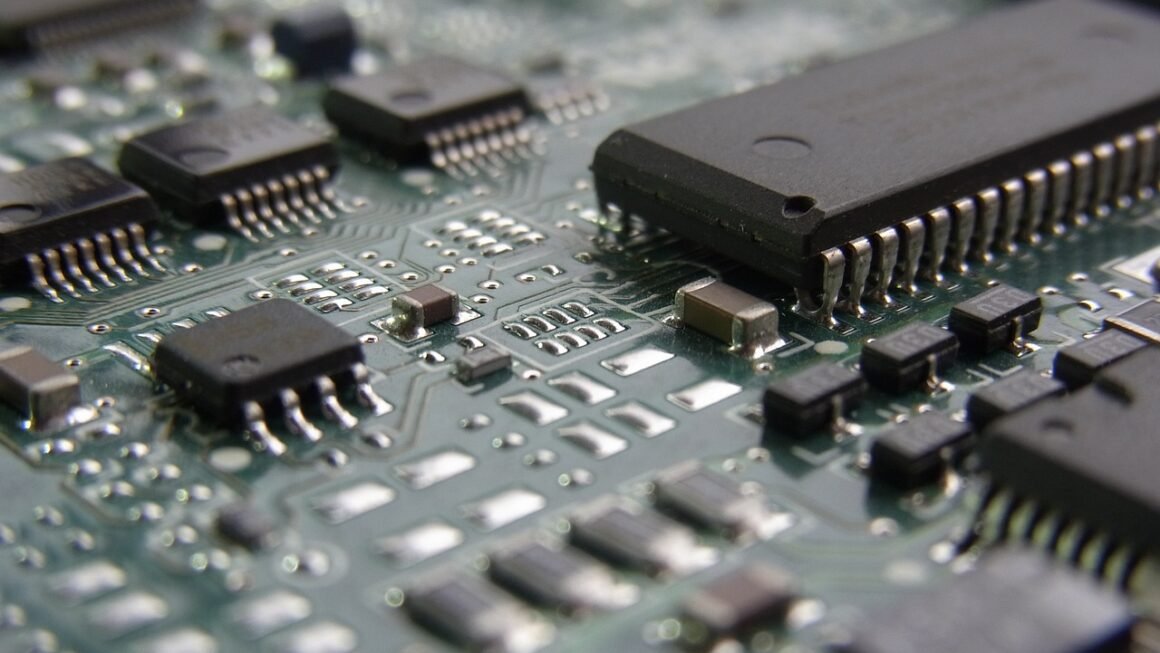Augmented Reality (AR) is rapidly transforming how we interact with the world around us, overlaying digital information onto our physical environment. Far beyond a futuristic novelty, AR is now a powerful tool for businesses and individuals alike, offering innovative solutions across industries, from retail and education to healthcare and manufacturing. Let’s delve into the world of augmented reality and explore its capabilities, applications, and the exciting future it holds.
What is Augmented Reality?
Defining Augmented Reality
Augmented reality, often abbreviated as AR, enhances our real-world perception by adding computer-generated images, sounds, and other sensory stimuli. Unlike virtual reality (VR), which creates entirely simulated environments, AR supplements the real world. Users typically experience AR through devices like smartphones, tablets, or AR glasses.
- Key Differences from Virtual Reality:
AR enhances the real world; VR replaces it.
AR requires less specialized hardware than VR.
AR is often mobile and accessible through everyday devices.
How Augmented Reality Works
AR systems generally function using a combination of hardware and software components:
- Camera: Captures the real-world environment.
- Sensors: Provide information about the device’s position, orientation, and movement. (e.g., GPS, accelerometers, gyroscopes)
- Processor: Processes the data from the camera and sensors to create the augmented reality experience.
- Display: Displays the augmented content, either on a screen or through wearable AR devices.
- Software: Handles image recognition, tracking, and content rendering.
AR systems employ techniques such as:
- Marker-based AR: Utilizes specific visual markers (like QR codes) that the device recognizes to trigger the overlay of digital content.
- Markerless AR: Relies on sensor data, GPS, and complex algorithms to detect surfaces and objects in the real world, allowing for more dynamic and realistic augmentations.
Benefits of Augmented Reality
The benefits of implementing AR technology are numerous and impactful:
- Enhanced User Experience: AR creates more engaging and interactive experiences, captivating users and making information more accessible.
- Increased Efficiency: By providing real-time information and guidance, AR can streamline processes and improve efficiency in various industries.
- Improved Training: AR simulations offer safe and effective training environments, allowing users to practice complex tasks without real-world risks.
- Better Visualization: AR allows users to visualize products and concepts in a realistic context, facilitating better understanding and decision-making.
- Increased Sales and Marketing Opportunities: AR creates innovative marketing campaigns and offers immersive shopping experiences, ultimately boosting sales.
Augmented Reality Applications Across Industries
Retail and E-commerce
AR is revolutionizing the retail landscape by enhancing the customer experience and driving sales:
- Virtual Try-On: Allows customers to virtually try on clothing, accessories, and makeup before making a purchase. (e.g., Sephora’s Virtual Artist)
- Product Placement Visualization: Enables customers to see how furniture or appliances would look in their homes before buying. (e.g., IKEA Place)
- Interactive Catalogs: Transforms print catalogs into interactive experiences with 3D models and additional product information.
- In-Store Navigation: Guides shoppers through stores and helps them find products easily.
- Example: Warby Parker lets customers virtually try on glasses using their smartphone’s camera.
Healthcare
AR is transforming medical training, patient care, and surgical procedures:
- Surgical Training and Simulation: Provides realistic simulations for surgeons to practice complex procedures.
- Patient Education: Helps patients understand medical conditions and treatment options through visual aids.
- Assisted Surgery: Guides surgeons during procedures by overlaying real-time data and anatomical information onto the surgical field. (e.g., AccuVein uses AR to display veins under the skin, making it easier for nurses to find them)
- Remote Assistance: Connects medical professionals with experts remotely, allowing for real-time guidance and support during critical situations.
Education
AR is enriching the learning experience by making education more engaging and interactive:
- Interactive Textbooks: Transforms textbooks into dynamic learning tools with 3D models, animations, and interactive exercises.
- Virtual Field Trips: Allows students to explore historical sites, museums, and scientific concepts from the comfort of their classrooms.
- Hands-On Learning: Provides students with opportunities to interact with virtual objects and conduct virtual experiments.
- Personalized Learning: Adapts to individual learning styles and paces by providing customized content and feedback.
- Example: The Google Expeditions app allows teachers to lead students on virtual field trips to places like the Great Barrier Reef or ancient Rome.
Manufacturing and Engineering
AR improves efficiency, safety, and productivity in manufacturing and engineering environments:
- Remote Assistance and Collaboration: Connects technicians and engineers remotely, enabling real-time troubleshooting and collaboration.
- Equipment Maintenance and Repair: Provides technicians with step-by-step instructions and visual guides for equipment maintenance and repair.
- Quality Control and Inspection: Enables inspectors to quickly identify defects and ensure product quality using AR overlays.
- Design and Prototyping: Allows engineers to visualize and interact with 3D models of products in a real-world context.
- Example: Boeing uses AR headsets to guide technicians during the assembly of aircraft, significantly reducing errors and improving efficiency.
Augmented Reality Technologies and Tools
AR Development Platforms
Several platforms are available to developers for creating AR applications:
- ARKit (Apple): A framework for building AR experiences on iOS devices. ARKit provides tools for tracking motion, estimating lighting, and detecting surfaces.
- ARCore (Google): Google’s platform for building AR apps on Android devices. ARCore offers similar capabilities to ARKit, including motion tracking, environmental understanding, and light estimation.
- Vuforia: A popular AR development platform that supports a wide range of devices and platforms. Vuforia offers features such as object recognition, image tracking, and extended tracking.
- Unity: A versatile game engine and development platform that supports AR development. Unity offers a visual scripting system and a wide range of assets for creating AR experiences.
AR Hardware Devices
Various hardware devices are used to experience augmented reality:
- Smartphones and Tablets: The most common and accessible AR devices.
- AR Glasses: Wearable devices that overlay digital information onto the user’s field of view. (e.g., Microsoft HoloLens, Magic Leap)
- Heads-Up Displays (HUDs): Displays information on a transparent screen in the user’s line of sight. (Common in vehicles)
Choosing the Right Technology
The best AR technology for a specific project depends on several factors:
- Target Audience: Consider the devices your target audience is likely to use.
- Budget: AR development can range from simple, low-cost solutions to complex, high-end experiences.
- Features and Functionality: Choose a platform that provides the features and functionality required for your project.
- Ease of Use: Select a platform that is easy for your development team to learn and use.
Challenges and Future Trends in Augmented Reality
Overcoming Challenges
Despite its potential, AR faces several challenges:
- Hardware Limitations: AR glasses and other specialized hardware are still relatively expensive and bulky.
- Technical Complexity: Developing AR applications can be technically challenging, requiring expertise in computer vision, 3D modeling, and software development.
- Privacy Concerns: AR applications that collect and analyze user data raise privacy concerns.
- User Experience: Ensuring a seamless and intuitive user experience is crucial for AR adoption.
Future Trends in Augmented Reality
The future of AR is promising, with several key trends emerging:
- Improved Hardware: AR glasses will become more lightweight, affordable, and stylish.
- Enhanced Software: AR software will become more powerful and user-friendly.
- Wider Adoption: AR will become more widely adopted across various industries and applications.
- Integration with AI and IoT: AR will increasingly integrate with artificial intelligence (AI) and the Internet of Things (IoT) to provide more intelligent and personalized experiences.
- Metaverse Integration: AR is expected to play a crucial role in the development of the metaverse, blurring the lines between the physical and digital worlds.
Conclusion
Augmented reality is no longer a futuristic concept; it is a present-day technology with the power to transform industries, enhance experiences, and improve our daily lives. While challenges remain, ongoing advancements in hardware, software, and connectivity are paving the way for wider adoption and more innovative applications. By understanding the fundamentals of AR, exploring its diverse applications, and keeping an eye on emerging trends, businesses and individuals can harness the power of augmented reality to unlock new possibilities and shape the future. The time to explore and embrace augmented reality is now.



